Sorted by date Results 126 - 150 of 191

Last week I started off my 10 tips to successful no-till crop production with a discussion on crop rotations. I feel this is the most important consideration on your farm. Designing a crop rotation for your farm will affect your bottom line, weed and disease cycles and your farm’s performance well into the future. Take plenty of time each year and assess your rotation and improvements you can make in designing your rotation. As I mentioned last week designing, a good rotation for our farm has b...
The Panhandle No-till Partnership is hosting a no till winter conference on Feb. 26 and 27, 2014. The conference will be at the Gering Civic Center beginning at 8 a.m. each day with registration and speakers starting at 8:45 a.m. This two day conference will feature some of the most knowledgeable and respected no-till crop production researchers and producers in our area. I always look forward to this conference where the topics and discussions are geared toward no till crop production in our area. Registration for the conference by Feb. 18 is... Full story
As the New Year begins so do new opportunities for educational meetings during the next couple of months for agricultural producers in our area. I always make it a point to attend as many of these meetings as I can to further my education in agriculture and no-till crop production. I would encourage everyone involved in production agriculture to attend these meetings. Agriculture is constantly changing and these meetings are a great place to learn about new technologies, marketing opportunities, crop production, and the opportunity to visit... Full story
As most of you are probably aware, I’m pretty excited about the opportunities yellow field peas provide for producers here in western Nebraska and around our region. We have been growing yellow field peas successfully on our farm for several years now and I’m convinced the field peas will prove to be a profitable crop for producers in this area. The best opportunities for field peas are in our dry land cropping systems and limited irrigation crop rotations. There are many agronomic benefits to including a legume in our cropping rotations. Add... Full story

I've joined the "social media" and now have a Facebook page. After some encouragement from members of a younger generation who find social networking to be an integral part of their lives, I have taken my first step into this rather fascinating means of communication. I do see where this type of interaction may prove to be a very good means of communicating with producers and educators on the benefits of no till crop production. I'm also a little nervous about having a page that is open to... Full story

I would like to start off by wishing everyone a very Happy Thanksgiving. I hope all of you are as fortunate as I am to be able to spend the holiday with friends and family. I would also like to thank Ron Bolze, Coordinator for the Nebraska Grazing Lands Coalition and University of Nebraska Extension for hosting Gabe Brown’s presentations last week around the state. I hope all of you who attended these presentations enjoyed them as much as I did. I have heard Gabe speak numerous times about h...

With pheasant hunting season in full swing I thought I would look at some opportunities for recreation in our area. I know we have a recreational opportunity in our region for attracting pheasant and deer hunters to our area on a much larger scale than what is currently available. If you provide a good hunting environment for these hunters there is a real opportunity for increasing farm income and benefiting the businesses in our communities. There are many hunters along the Front Range of Color...

AGRICULTURAL SUMMARY: Wyoming producers experienced warm, dry conditions with strong winds last week. According to NRCS Monday morning snow report, the snow water equivalent is at 148 percent compared to 65 percent last year. High temperatures ranged from 46 degrees at Lake Yellowstone to 69 degrees in Torrington. Low temperatures ranged from 8 degrees in Lake Yellowstone to 26 degrees in Cheyenne. Seventeen stations reported receiving no precipitation. Dubois received the most precipitation...
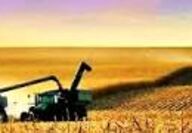
We finally were able to start combining our irrigated corn yesterday afternoon as the moisture in the corn dropped to below 16% which was welcome news. Overnight it snowed about 4 inches, so we're back in a holding pattern again. This has been a familiar pattern this fall planting and harvesting season. I was visiting with a good friend of mine who was comparing his sugar beet harvest to the crab fishermen on the television show "Deadliest Catch". He felt his sugar beet harvest was similar to...
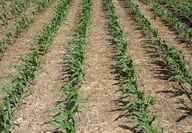
The following is a press release sent to me by Dr. Ron Bolze, professor at Chadron State College. I think this is one of the most important meetings that everyone involved in production agriculture needs to attend. I've known Gabe Brown for several years and have visited his farm to see for myself what Gabe has done to improve the soil on his farm and the profitability of his operation. Gabe's message to the audience about how to improve the health of the soil on your farm to increase... Full story
Wyoming Livestock Board staff veterinarians have announced that two cases of the neurologic form of Equine Herpes Virus Type 1 (EHV-1) have recently been discovered in northwestern Wyoming. One of them occurred in Teton County, the other in Park County. A total of seven horses were affected by the disease, one of which had to be euthanized. The remaining infected and exposed horses have been placed under quarantine. It has been determined by the staff veterinarians that the two incidents are unrelated. No new cases have been reported since the...

As I mentioned in a previous article I had a nice visit with Dr. Jeff Bradshaw about the wheat stem sawfly. Dr. Bradshaw has since sent me an article about the wheat stem sawfly and some management practices producers may want to consider for their own operations to begin combating the presence of this insect in their winter wheat production practices. The following is the article Dr. Bradshaw was kind enough to send to me. “A NEW RESURGENCE OF AN OLD PEST OF WHEAT: WHEAT STEM SAWFLY Jeff B...

Last week I was invited to speak to the Nebraska Water Funding Task Force. The NWFTF met in the morning for presentations by John Berge, general manager of the North Platte NRD, Pat O’Brien, general manager of the Upper Niobrara White NRD, and Steve Sibray, hydrogeologist with the University of Nebraska Panhandle Research and Extension Center. After the presentations we boarded a bus and traveled to the Ginn sugar beet facility to learn about the sugar beet industry in Box Butte County. We a...

No-till crop production gives the producer using this system the advantage of managing residues on the soil surface to improve soil structure, water infiltration, and lower soil moisture evaporation. This system enables the producer to improve water management. No-till crop production helps to better manage the moisture Mother Nature provides as well as the water pumped from our groundwater and surface water. Leaving the residues from the previous crop on the soil surface improves water infiltra...
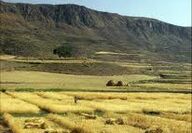
Last week I told you about my experience in talking to students at Chadron State College. I had a great time visiting with these students and hopefully our paths will cross again. I also had the opportunity to visit with Dr. Ron Bolze, the instructor at Chadron State who had invited me to talk to his students about soil health. I was pretty nervous about getting up in front of college students and trying to enlighten a college classroom. I really didn’t feel qualified to speak to students abo... Full story

Last week I had the opportunity to do something that I hadn’t done in 36 years. I walked into a college classroom. I have to admit that it felt like old times watching the students enter the classroom in varying degrees of anticipated learning. Some had just gotten out of bed, some were going through the motions, and others were eagerly awaiting an opportunity to learn. I felt right at home with them and could relate to all their levels of the college experience as I had walked in all their s... Full story
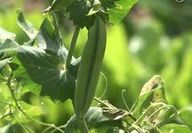
Yellow field pea producers in this region have finished their 2013 harvest which produced good results despite the challenges Mother Nature had in store for this growing season. Throughout my travels around the Panhandle looking at this year’s field pea crop I thought many first time field pea growers did an outstanding job of producing their first field pea crop. There will be a learning curve this first year and I expect any production problems that occurred will be corrected next spring. Y...

The Panhandle No-till Partnership hosted field days in the Sidney, Bridgeport, Berea, and Clinton areas recently. Paul Jasa, UNL Extension Engineer, was able to join us for these field days. Paul has a wealth of knowledge pertaining to all aspects of no-till crop production and I really want to thank Paul for sharing his expertise with our producers. These field days focused primarily on irrigated no-till crop production. No-till producers in our area have really come a long way in improving...

Last week I traveled around the Panhandle to attend various field days. The crops around our region look to be doing pretty well if a hail storm hadn’t hit the fields. There seems to be more hail storms around this year than most years. Almost every producer I visited with had a hail storm somewhere on their farm. I drove to Grant, Neb., to Steve Tucker’s farm to attend a field day hosted by the Colorado Conservation Tillage Association in conjunction with No-till On the Plains. This field wor...
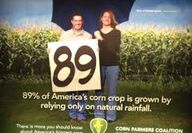
In the last several articles I took a look at how soil microbe populations, forage crops, and grazing cattle on our irrigated field of corn have influenced our fertilizer management on this field. There definitely seems to be a correlation between improving soil health with forage crops following winter wheat and grazing cattle on these crops prior to planting our irrigated corn and nitrogen fertilizer requirements. We have lowered our nitrogen fertilizer in this field by 60 pounds per acre and...

I’ve been writing about my limited experience with cover crops grazed for forage and planted back to a cash crop. It may be in today’s modern production agriculture we need to adopt the same concepts used a few generations ago to manage their fertility concerns prior to the adoption of commercial fertilization. We may have overlooked or forgotten the concepts our fathers and grandfathers used to improve their soils, the same soils we are working with today. I came across a picture of my gra... Full story
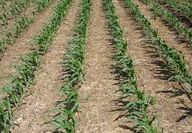
The Panhandle No-till Partnership will be hosting a series of Field Days Aug. 21 and 22. No-till crop production systems result in lower soil moisture evaporation, improved water infiltration, and improved soil water holding capacities. No-till crop production practices reduce the irrigation water requirements to produce profitable crops in this region with reduced input costs including less irrigation pumping. These field days are open to the public and everyone who is involved in irrigated...

A local Pine Bluffs farmer leads a trail of wheat shaft dust Monday afternoon as harvest in our area hits the downturn. Wyoming Wheat Marketing Commission director Keith Kennedy estimated in his last wheat harvest report that 55 percent of Wyoming’s 145,000 acres of winter wheat had been harvested. According to Kennedy, yields were between 20-32 bushels per acre with moisture at 10.5 – 12 percent and proteins from 10.5 – 14 percent....

A green lawn, well maintained, watered and cared for is a point of pride for its caretaker. However, as with any prized possession, enemies can attack and turn beauty into a beast. Many weeds that you find a simple eye pain, can be classified by the state as a pest or worse, a noxious weed which legally needs to be eliminated. Bind weed is one in particular that spreads quickly and is listed by the state of Wyoming as a noxious weed. It presents itself as a harmless running vine weed with... Full story
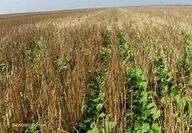
Cover crops have proven to be an intriguing production practice in modern agriculture. Cover crops have also proven to be equally perplexing. Let’s take a look at everything I think I know about cover crops, which is a little, and all that I don’t know which is considerable. What has gotten me so interested in cover crops and especially cover crops grown for grazing cattle is the testimonial I’ve heard from farmer/rancher friends of mine and others I’ve listened to at meetings who have some am...